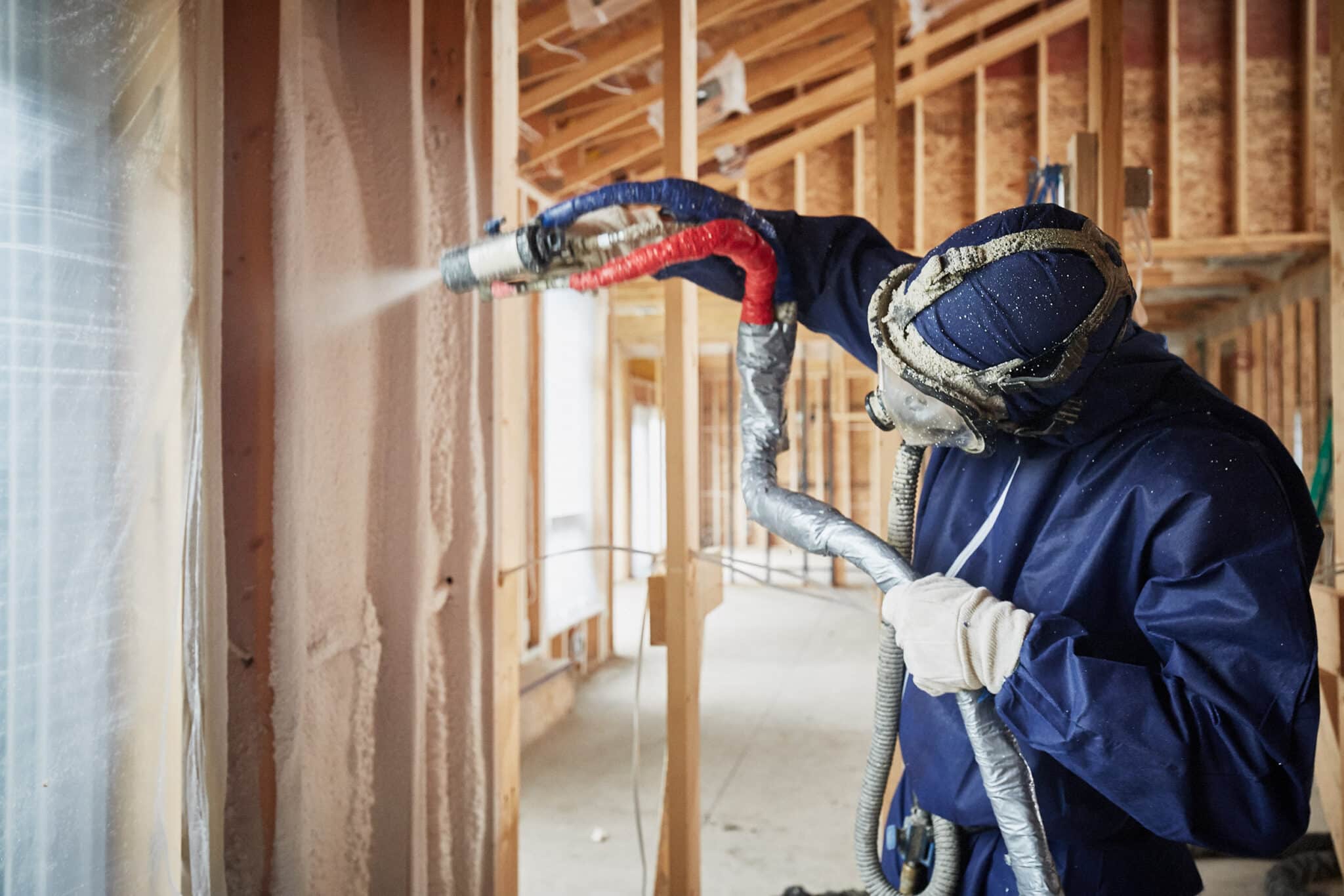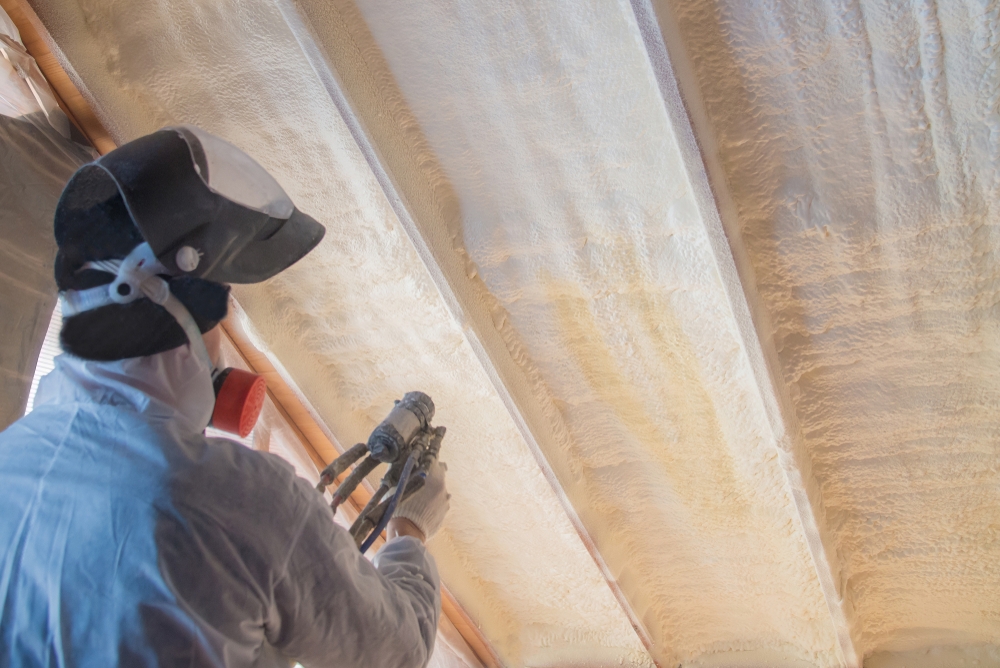Foundation insulation plays a significant role in improving energy performance in residential and commercial buildings. It helps reduce heat loss, stabilize interior temperatures, and improve long-term durability. Whether you’re retrofitting an older structure or planning new construction, knowing how expert foundation insulation contributes to energy savings is essential for making informed decisions.
Why Foundation Insulation Affects Energy Waste
Energy escapes from the foundation more than many property owners realize. Concrete and masonry conduct heat easily, which causes temperature fluctuations and increases HVAC load.
How Energy Loss Happens Through Foundations
- Concrete conducts heat easily, allowing warmth to move from conditioned space to the ground.
- Gaps and cracks in basement walls or slabs let outside air infiltrate.
- Crawl spaces with exposed walls or unsealed vents allow uncontrolled air transfer.
Spray Foam vs. Traditional Insulation in Foundations
Spray foam insulation outperforms fiberglass or foam board due to its air-sealing capability and higher R-value per inch. It’s especially useful in below-grade applications where moisture resistance is crucial.
- Closed-cell spray foam resists water absorption and air leakage.
- It adheres directly to foundation surfaces, eliminating thermal bridging.
- Traditional batts or rigid foam may leave gaps or degrade in damp environments
Common Types of Foundation Insulation
Not all foundation areas require the same approach. Choosing the right system depends on structure type, climate zone, and exposure risk.
Slab-on-Grade Insulation
This method places insulation either beneath or around the perimeter of a concrete slab.
- Perimeter insulation reduces thermal bridging where slab meets exterior air.
- Under-slab spray foam protects conditioned interior spaces from soil temperatures.
- Key for homes or buildings with radiant heat floors.
Basement Wall Insulation
Basement foundations often lose heat through uninsulated walls in contact with the ground.
- Interior insulation keeps installation accessible but must be moisture-resistant.
- Exterior insulation provides continuous coverage but can be more labor-intensive.
- Spray foam on interior walls creates a seamless thermal and vapor barrier.
Crawl Space Insulation
Crawl spaces can be ventilated or unventilated, and each requires a different treatment.
- Encapsulated crawl spaces benefit from closed-cell spray foam on walls and rim joists.
- Ventilated spaces may require both floor insulation and vent sealing to be effective.
- Skimping on crawl space insulation can lead to drafts and mold issues.
Benefits of Using Spray Foam for Foundation Applications
Closed-cell spray foam has become a preferred option for professionals due to its air-sealing, moisture resistance, and high R-value in thin layers.
Key Advantages for Energy Efficiency
- Blocks conductive, convective, and radiant heat transfer.
- Prevents air infiltration, a major cause of energy loss in foundations.
- High R-value per inch means better insulation in tight spaces.
Long-Term Durability in Harsh Environments
- Closed-cell foam resists mold, pests, and moisture damage.
- It maintains structural integrity even in freeze-thaw cycles.
- Adheres securely to concrete and masonry without fasteners or adhesives.
Comparison Table: Spray Foam vs. Rigid Foam for Foundation Insulation
| Feature | Closed-Cell Spray Foam | Rigid Foam Board |
|---|---|---|
| R-Value per Inch | ~6.5–7 | ~4–5 |
| Moisture Resistance | High | Moderate |
| Air Seal | Complete | Partial (needs taping/sealing) |
| Installation Complexity | Medium (requires equipment) | Easy |
| Durability Below Grade | High | Moderate |
| Adheres to Irregular Surfaces | Yes | No (requires mechanical fix) |
| Mold Resistance | High | Moderate |
How Foundation Insulation Impacts Whole-Building Performance
Foundation insulation isn’t just about stopping drafts—it affects the comfort, energy use, and durability of the entire structure.
HVAC Load and Operational Costs
Insulated foundations reduce HVAC runtime by minimizing temperature swings.
- Less heat loss means more stable indoor temperatures.
- Systems cycle less often, reducing wear and energy consumption.
Indoor Air Quality and Moisture Control
Moisture entering through uninsulated foundations can lead to condensation and mold growth.
- Spray foam creates an impermeable layer, protecting interior finishes.
- Sealing foundation air gaps reduces outdoor pollutant entry.
Building Code and Compliance
Modern energy codes increasingly require foundation insulation as part of the building envelope.
- IRC and IECC standards vary by climate zone.
- Proper insulation can help qualify for energy efficiency incentives or certifications.
FAQs
How does foundation insulation reduce energy bills? By preventing heat from escaping into the ground, foundation insulation stabilizes interior temperatures and reduces the workload on heating and cooling systems. This leads to lower energy use year-round.
Is spray foam safe for use below grade? Yes. Closed-cell spray foam is designed for below-grade use, providing both thermal and moisture resistance. It won’t degrade with exposure to damp soil or changing ground temperatures.
What parts of a foundation should be insulated? Slabs, basement walls, crawl space walls, and rim joists are common areas. The specific approach depends on climate zone and building type. Perimeter and under-slab insulation are often paired for best results.
Can I install foundation insulation during a retrofit? Yes. Interior foundation walls, crawl spaces, and basement rim joists are accessible during retrofits. Spray foam works well in both new and existing buildings.
Does foundation insulation affect indoor humidity levels? Yes. Proper insulation prevents moisture entry and condensation, which helps maintain balanced humidity indoors. It also reduces the risk of mold and mildew growth in basements or crawl spaces.
Conclusion
Foundation insulation is often overlooked, but it directly influences a building’s energy performance, comfort, and durability. Using materials like closed-cell spray foam allows for both thermal protection and moisture control in one application. By addressing key areas—slabs, basements, and crawl spaces—property owners can significantly cut down on energy waste and maintain healthier indoor environments with professional spray foam insulation services.
Selecting the right insulation type for your foundation isn’t just about meeting code—it’s about long-term efficiency and building integrity. For both residential and commercial buildings, spray foam offers a high-performance, low-maintenance option that holds up under pressure.
Reviewer: Michael Carter reviewed this article using insight gained over 12 years in the spray foam business. His feedback focused on helping contractors reach new customers without overcomplicating their message.

